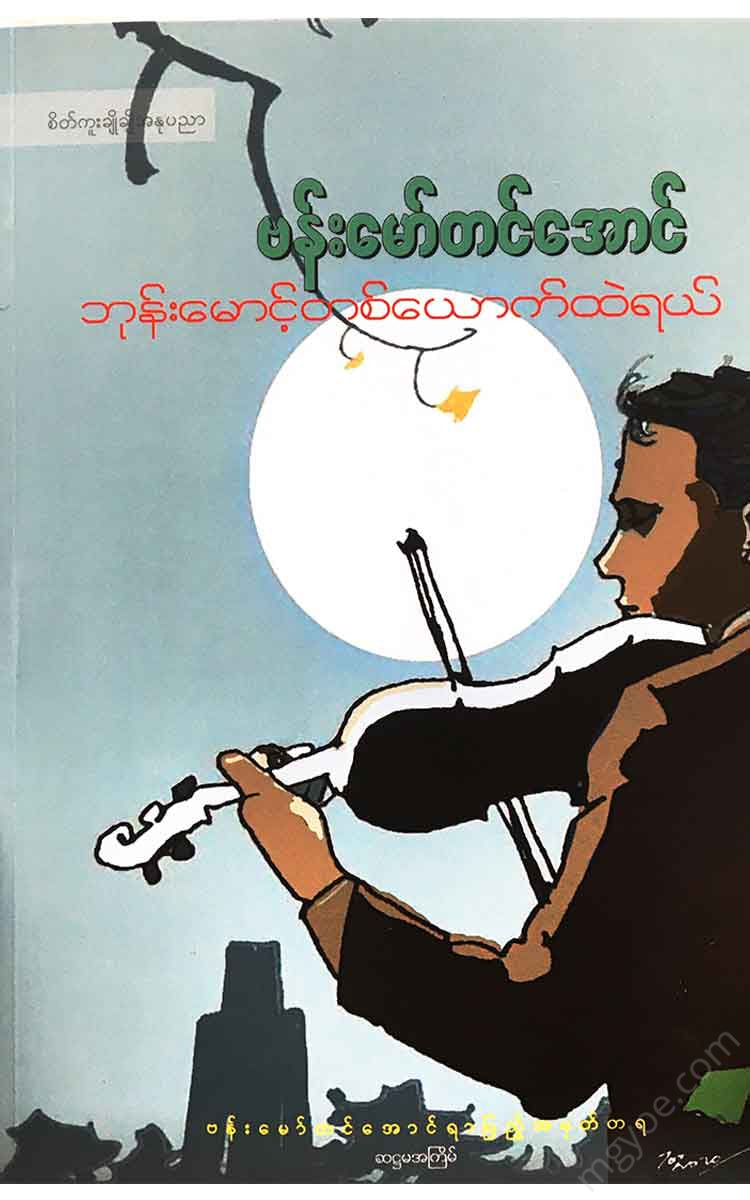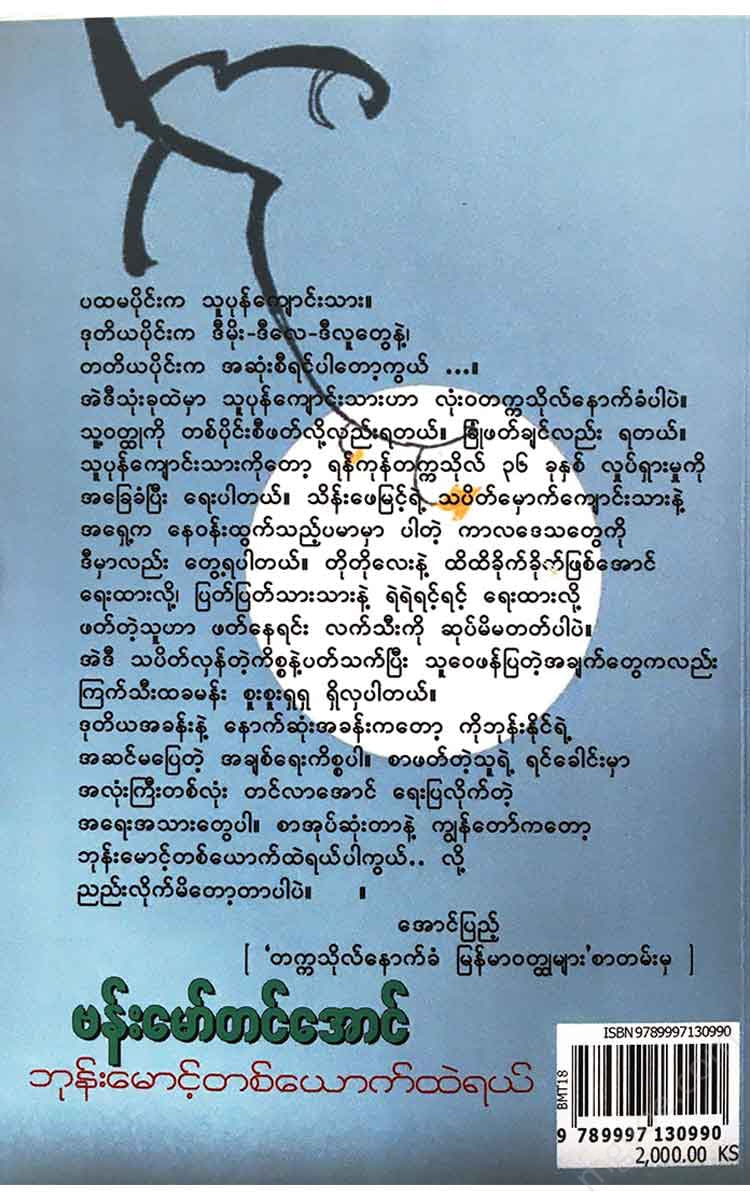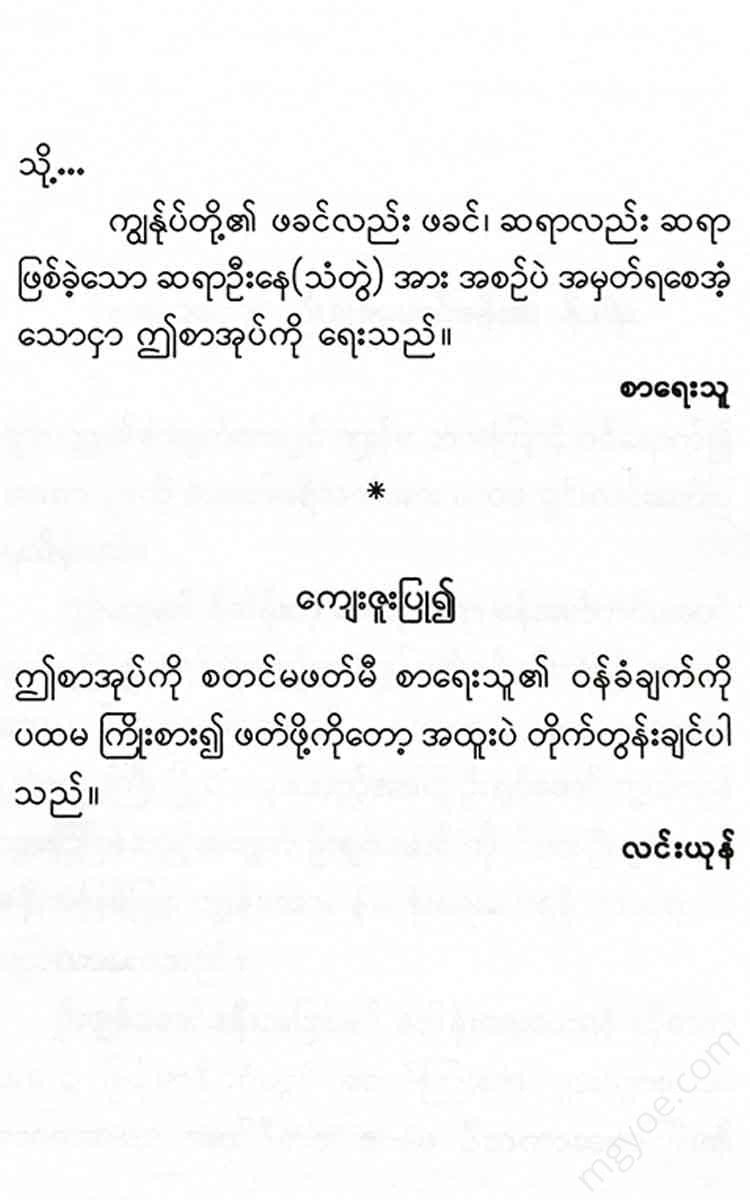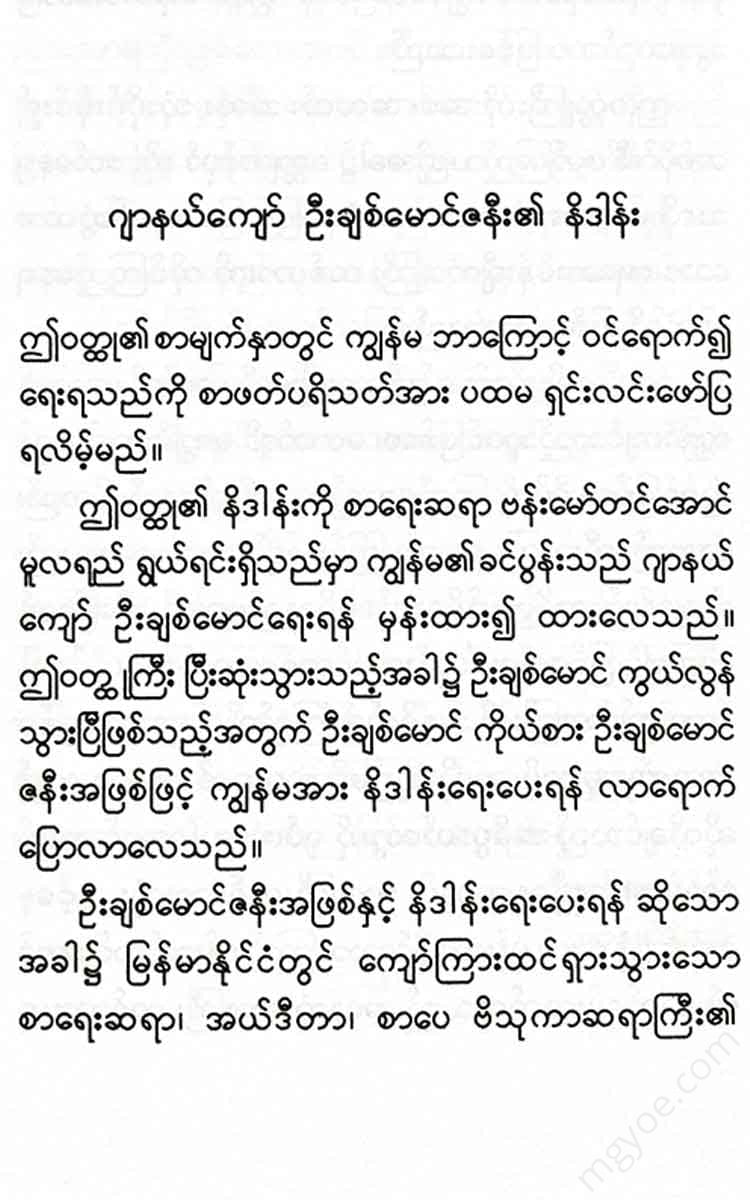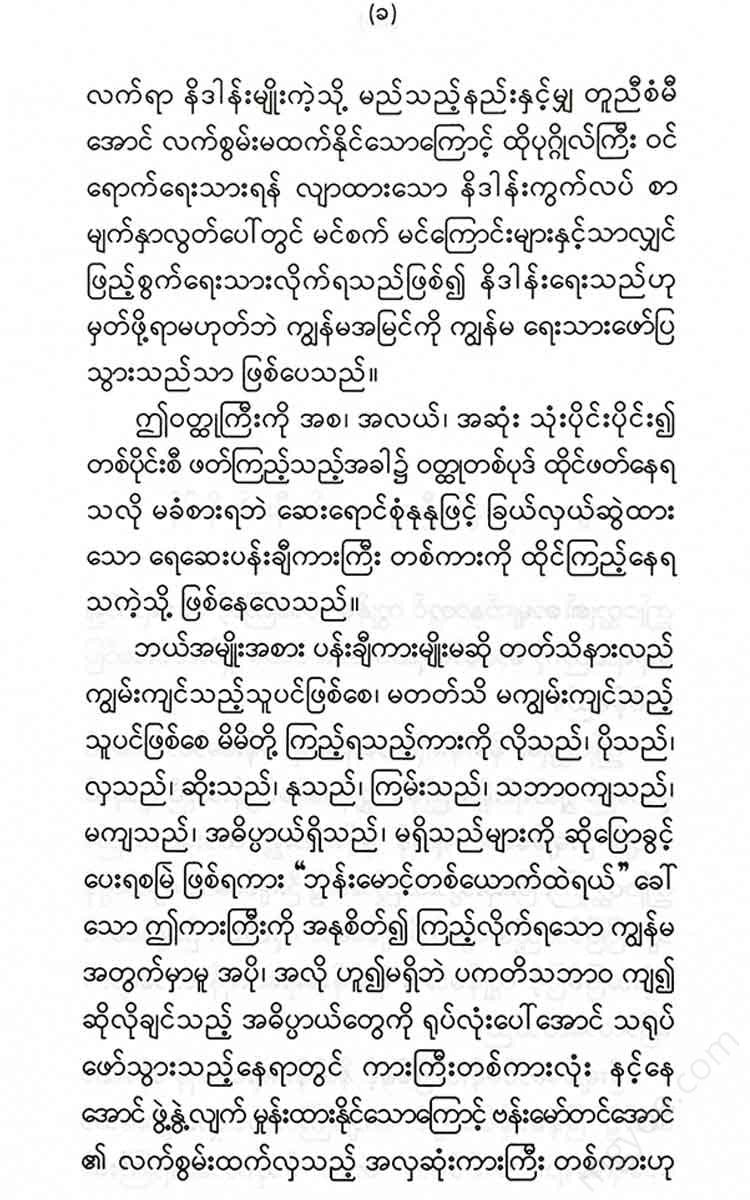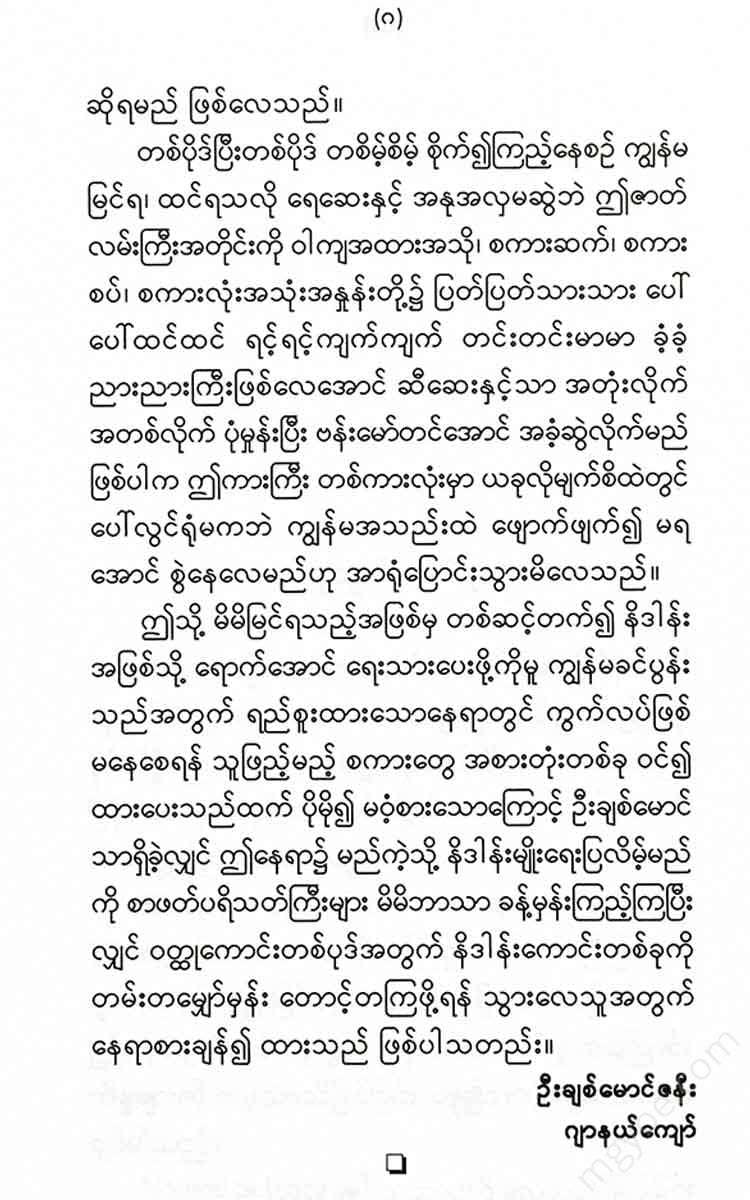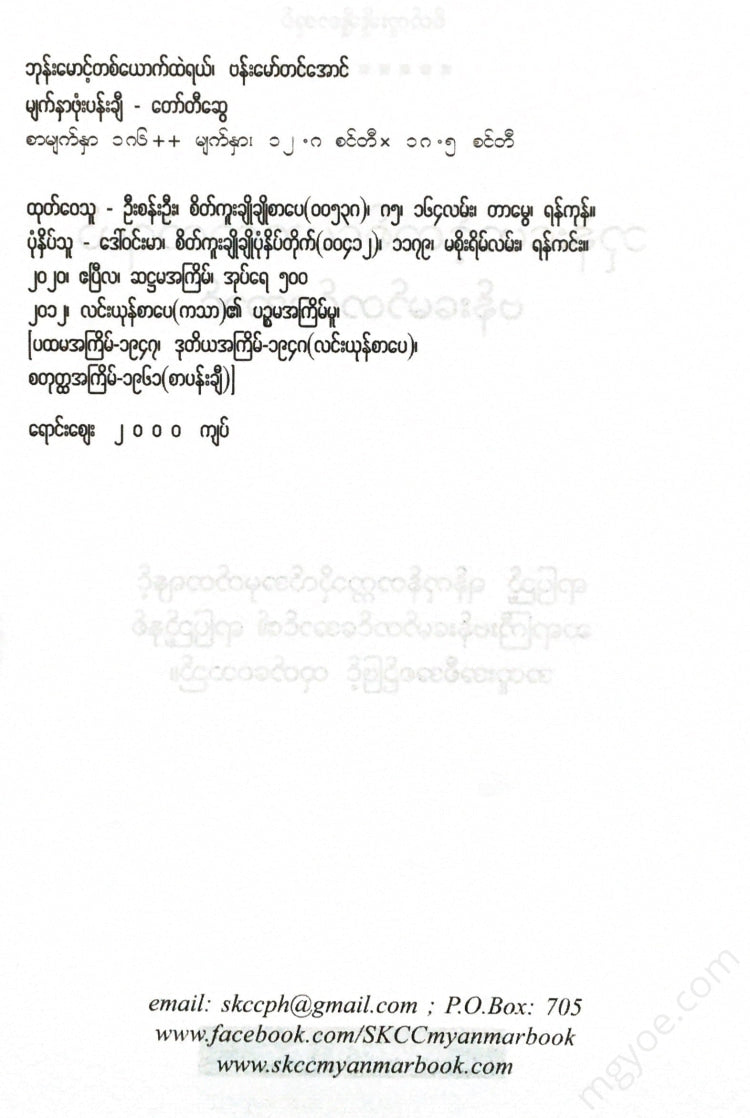စိတ်ကူးချိုချိုစာပေ
Bhamo Tin Aung - Only one boy
Bhamo Tin Aung - Only one boy
Couldn't load pickup availability
Ko Pho Naing and the rest of us
Ko Pho Naing is a character in Bhamo Tin Aung's first novel, Pho Moe Aung
When the novel "Bone Mountain Alone" was published, the Burmese people were actively fighting for complete independence.
After the war, the Governor-General, Daw Man Smith, came with a white paper. According to the white paper, the Governor had complete power. The Governor would rule for three years with his own authority. The British capitalists would return and manipulate the economy of Burma as they pleased according to the plans and projects drawn up in the Siamese. Only then would they be given a level of self-government. The Burmese people were dissatisfied with this and opposed it. They demanded complete independence.
After the war, the youth were active in the revolutionary spirit. Under the leadership of the great national leader General Aung San, national unity reached an unprecedented peak.
The Nay Pyi Taw meeting held on August 19, 1945 demanded complete independence. In January 1946, the National Conference of the Federation of Myanmar (FPML) was held in the middle of Shwedagon Pagoda.
Women take off their precious gold, silver, and jewelry and donate them to the Freedom Fund and the Freedom Fighters' Fund.
The People's Comrades Army, formed in December 1945, became a new political force that grew overnight.
It became an army of the AFPFL. The People's Comrades Army was organized according to the military structure. Military exercises were conducted. The patriotic Burmese youth who had left the Burmese Army and were not allowed to join the newly formed Burmese Army under the Kandy Agreement joined the People's Comrades Army. There were more than 100,000 soldiers in the country. This force was a useful force if the fight for independence was to continue. The governor tried to destroy the People's Comrades Army. He ordered that they should not wear uniforms and not do military exercises.
In May 1946, the People's Liberation Army, the Free Myanmar Army, and farmers gathered in Htantipin, Insein District, to protest. The authorities opened fire on the procession, killing four farmers. The people revolted. The governor's government made arrests. The Free Myanmar Army members were charged with robbers, rioters, and criminals and imprisoned. The people of Yangon marched to Htantipin in buses to protest.
At that time, Rangoon University was reopened. We passed the 10th grade examination in March 1946 and entered the university in October. Unions were reorganized in the university. The active young students supported the Aung San-led Aung San Liberation Front. They were eager to join the struggle for independence.
In mid-1946, Governor Daw Man Smith was recalled by Bill. He and the Burmese people were at odds. He planned to charge General Aung San with murder. Then the Burmese people would rise up. Behind him was an active public, a large public that would fight for independence. If General Aung San was arrested, the officers and comrades of the Burmese Patriotic Army who were in the Burmese Army would fight.
Therefore, to implement the new Burma policy, the leader of the Labor government, Attlee, appointed Sir Hubert Rant as the new Governor-General of Burma.
The new governor was welcomed by the Burmese people with public demonstrations and strikes. Strikes followed one after another. There were strikes by postal workers, railway workers, clerical workers. Even the police went on strike.
The new governor discussed with the leader of the AFPFL, General Aung San, and invited him to participate in the dissolution of the old Governor's Executive Council and the formation of a new council. General Aung San became the vice-chairman of the Governor's Council, which did not include Englishmen. The governor agreed that the cabinet should be headed by a prime minister.
In 1947, a Burmese government delegation led by General Aung San was invited to London for talks. When General Aung San left for London, our students went on strike in support of complete independence. The University Students' Union and the All Burma Students' Union led the strikes.
During the summer school holidays of 1947, I did not return home. I went with Ko Kyi (the late writer Maung Kyi) to organize strikes in Pantanaw, Nyaungdon, Danupyyu, Maupin, and Bogalay.
Ko Kyilyin was originally active in the Pakokku Communist Party. He joined the university after the Communist Party split.
I too was a secretary in the People's Comrades Army in Pakokku, but when the political divisions led to the departure of the Communist Party (including my friends) from the FSL, I came to the university disappointed. Almost all my friends went to Yangon to attend university. I went to the first People's Comrades Conference in early June.
I came to Yangon around 1990. After the conference, I visited the university grounds and felt like going to school. So I came to the university after begging my parents. Since both of my brothers had finished the tenth grade, it was quite difficult to support the school fees for both of us. However, they said that they would eat together and sent both of them to the university.
I was riding the tide of the student strike movement. I went to the secretariat with the student conference representatives and participated in the protest. When I returned home after the strike, I gave military training to young members of the FSLA in Myaing and Myitkyina. Ko Kyaw Shein (later Socialist, deceased) of the FSLA said that in preparing for the independence struggle, we must wage armed struggle. Therefore, he convinced me that this was a preparation for armed revolution.
I believe that General Aung San's speech before leaving for Burma, "We will try to achieve independence within a year, or else we will surrender," was a wake-up call for us.
The general went to India and discussed with Pandit Nehru. When journalists asked him, "Should we use soft or hard methods in the struggle for Burmese independence?" the general replied, "It depends on the situation. We will not hesitate."
When General Aung San returned from London, he agreed to elect a Constituent Assembly and draft a constitution for an independent Burma. In February 1947, the Panglong Conference was held to ensure ethnic unity and to join the Union without breaking the deadlock. Then elections were held in April. The FSLA was defeated. However, on July 19, the General and the martyrs were assassinated and drowned.
